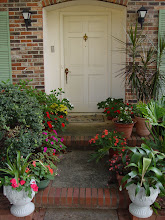

Hartsfield Airport, Atlanta
Here in the northern hemisphere during October we are enthralled when an outburst of burnt umber, sienna, gold, cadmium orange, and alizarin red erupts across the arboreal canopies of our forests and gardens. Each year I wander around in absolute wonderment at how all these vibrant colors can emerge from emerald green leaves. These autumnal colors remind us of simple delights of life - hot chocolate with marshmallows, pumpkin pie, campfires, hot cider, hayrides, and the companionship of good friends and family. There is a coziness that settles on us almost as an aureate patina, not unlike the sterling one that settles on the world at Christmas.
So powerful are the metaphors of holiday visions. They have resulted in the most stunning examples of community and good will in the most unlikely places on earth. On December 24, 1914 in the gas-filled trenches of European battlefields at the dreaded Western Front, German and Allied soldiers set aside their weapons to enact the legendary Christmas Truce; coming out of their frozen fox- holes, singing carols, exchanging gifts, sharing food, jokes, even athletic contests. Miniature Christmas trees were sent by the German command to the front lines where they were decorated with candles and placed on the parapets of the trenches. No-Man’s Land became a virtual playground on that stunning Christmas Day. Against all odds, community erupted in a venue known only for death and destruction. Alas, the British High Command, under John French issued stern orders against such fraternization. Despite such orders on both sides of the conflict, along some parts of the front, the Truce persisted for months.
As one observer reported, “The war was indeed on again, for the Truce had no hope of being maintained. Despite being wildly reported in Britain and to a lesser extent in Germany, the troops and the populations of both countries were still keen to prosecute the conflict.” Ultimately, 16,543,185 died and 21,228,818 were wounded. Michael Duffy points out “In our age of uncertainty, it comforting to believe, regardless of the real reasoning and motives, that soldiers and officers told to hate, loathe and kill, could still lower their guns and extend the hand of goodwill, peace, love and Christmas cheer.”
A century later we face stunning uncertainties of a kind inconceivable in 1914. A diet of high-tech terrorism, identity theft, the challenges of chronic degenerative disease, scourges of drug addiction, escalating crime rates, and even the fragility of financial systems in a global economy bring insomnia and emotional stress to untold millions. Community and good will seem more elusive in our over-crowded competitive world. In my own small daily world, I see people facing stunning challenges that are every bit the foes once faced across No-Man’s Land; often endured in bleak isolation.
For Christmas to illuminate the Front, it required a soldier with vision willing to take a risk and be the first out of the trenches with an offer of goodwill. For thousands of soldiers in 1914, they experienced the astounding reality that love is far more powerful than entrenched hate. In our era we have the choice to demonstrate that small low-risk actions promoting community can transform the lives of isolated people living out private warfare with massive fear and uncertainty in their daily lives.
Here in the autumn, I can choose to cross the asphalt No-Man’s Land in front of my suburban house and carry a token of goodwill to those who are hidden in fox-holes of fear and distress. In October it seems that pumpkin works especially well for this purpose. Pumpkin? Untold millions of them are grown each year to add to the aureate glow of late October. They are colorful, ubiquitous, free, and functional. Pumpkins make the grandest of whimsical colorful vases for a variety of fall flowers and greens. Setting out in my old Toyota I managed to visit no less than seven houses to make floral deliveries before heading to the airport at midday, leaving flower-filled pumpkins across the county.
At my first stop directly across the asphalt, three dear souls huddle together, each battered by the harsh reality of cancer and long-term illness. From the responses I received, one would think cancer is cured by a diet of flower-filled orange squash. Perhaps the vitamins and minerals abundant in pumpkin can help those at my next stop who struggle with depression, anxiety, and insomnia. Being environmentally conscious, I point out that when the flowers are gone, pumpkins can find new life as a vegetable, soup, or Thanksgiving pie. Six miles away a bed-ridden mute soul struggling with the isolation that comes from living out a terminal neurological nightmare broke into wordless tears when a fifteen pound orb filled with a hundred flowers took over her hospital bed table. Half a mile west a mother and daughter living in the darkness of old age and disability experience a brief respite from their shadows. I get a hug and snacks. Eight miles across the county, a former teacher faces each day from a wheelchair with the immense additional challenges of a stroke at a young age and assorted neurologic challenges. A floral pumpkin netted me a smile and a hot sandwich to eat on my drive to the airport one hundred thirty miles to the west. Two other women struggle with medical nightmares every day, giving each other a sense of safety. Being good cooks, I know this particular pumpkin will find a new calling after life as a flower pot.
A hundred years ago soldiers had a vision for something better than war and came out of their holes. Perhaps the beta-carotene in pumpkin can give us better vision for creating community right around us. Even if you don’t know how to boil water, you can cook up community, especially this time of year. Just find a jack-o-lantern and light up someone’s face with a smile.
Happy holidays!

No comments:
Post a Comment